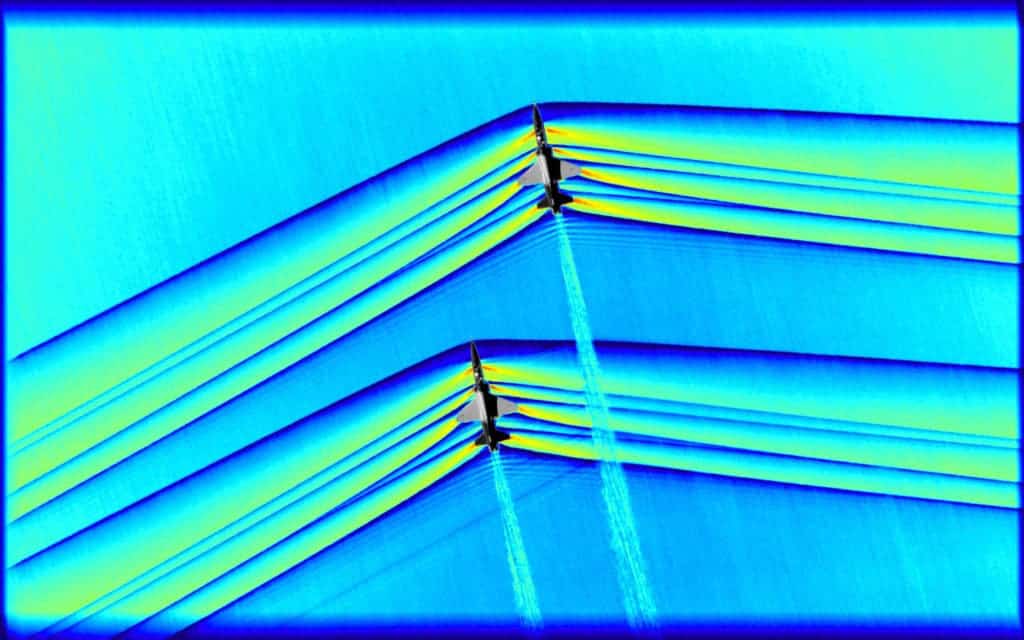NASA snapped unique plane-to-plane photos of supersonic shockwave interaction.

When Physical Scientist J.T. Heineck of NASA’s Ames Research first got hold of the long-awaited images, he was thrilled. It was the product of 10 years’ worth of technical development, a long-term project which culminated with the high-quality imagery of shockwaves — areas of rapid pressure changes produced when an aircraft goes supersonic (flies faster than the speed of sound).
Shockwaves produced by aircraft merge together as they travel through the atmosphere. These shockwaves can also propagate to the ground, where they can be heard as a sonic boom.
“I am ecstatic about how these images turned out,” said Heineck. “With this upgraded system, we have, by an order of magnitude, improved both the speed and quality of our imagery from previous research.”
“We never dreamt that it would be this clear, this beautiful,” he added.

Supersonic travel means that an object exceeds the speed of sound — and, as it passes that speed limit, it ‘breaks the sound barrier’ i.e. produces shock waves. Normally, as an airplane is flying, it pushes its way through the air, pushing molecules in the atmosphere. However, at the speed of sound, the molecules just can’t get away from the plane fast enough — they can only move as fast as sound — and therefore begin to compress, increasing the pressure at the front of the plane.
This increased pressure acts like a barrier on the plane. When the plane accelerates beyond the speed of sound, it bursts through this barrier, causing a rapid change in pressure, producing a shockwave. These shock waves are not conventional sound waves, having different physical properties, and producing a loud “crack” or “snap” noise.
Taking this type of image, where shockwaves are interacting, is extremely challenging. You need two T-38 planes flying at supersonic speeds approximately 30 feet (9 meters) away from each other, as well as another one close by, with a specialized camera capable of operating under these extreme conditions.
“We’re looking at a supersonic flow, which is why we’re getting these shockwaves,” said Neal Smith, a research engineer with AerospaceComputing Inc. at NASA Ames’ fluid mechanics laboratory.
“What’s interesting is, if you look at the rear T-38, you see these shocks kind of interact in a curve,” he said. “This is because the trailing T-38 is flying in the wake of the leading aircraft, so the shocks are going to be shaped differently. This data is really going to help us advance our understanding of how these shocks interact.”

The results provide more than just a few pretty pictures — they will allow researchers to better understand how these shockwaves interact with the planes and with each other, ultimately enabling NASA to better understand some of the finer aspects of supersonic flight, which is particularly important for the X-59 — an experimental supersonic aircraft being developed by Lockheed for NASA’s Low-Boom Flight Demonstrator program.



